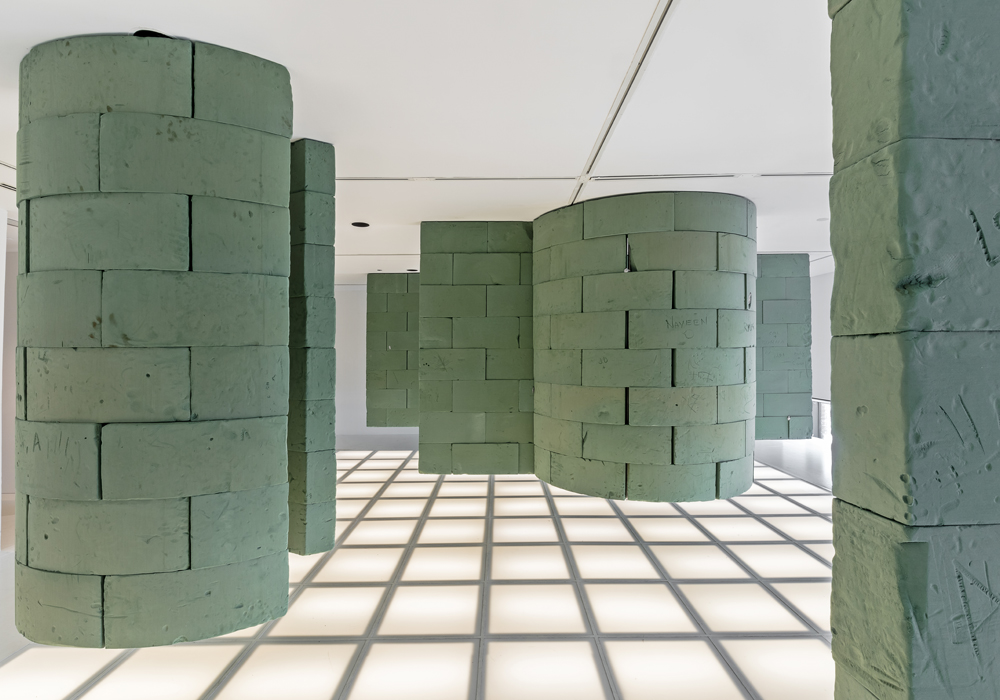In 1966, architect Aldo van Eyck, renowned for his holistic and experiential approach to design, created a temporary, maze-like pavilion to house sculptures by artists including Jean Arp, Alberto Giacometti and Constantin Brâncuși. Riffing on this alternative exhibition design, artists Nadia Belerique, Lili Huston-Herterich and Laurie Kang have come together to create The Mouth Holds The Tongue, a Power Plant commission that attempts to encourage a reassessment of the white-cube gallery by presenting elements of van Eyck’s pavilion as sculptural entities in themselves.
Literally turning the pavilion’s architecture on its head, the walls in The Mouth Holds the Tongue find their foundations not in the floor, but from the ceiling reaching down. This directional shift has a giddying effect on the installation’s perceived weight; the walls halt a couple of feet before reaching the ground, resulting in a sense of levity and a palpable gravitational tension. The open-ended, curved and staggered dissection of the gallery space lends the installation a playful air (inherent in van Eyck’s sensibilities), allowing viewers to engage in a hide-and-seek exploration of structures that simultaneously suggest Modernist developments and ancient turrets. At various points the walls are studded with silvery nuggets, like glinting archaeological finds, while the gridded floor lighting (mimicking the ceiling-tile lighting in van Eyck’s original) could be squares from a game board.
The atypical building material of the installation enhances its formal success. The artists use industrial-sized blocks of flower-arranging oasis, a fascinating substance, solid and soft, manmade and organic. It alludes to creativity and femininity, and has evidently led to curious hands pock-marking its mossy, velvety surface. Unfortunately, it is the material’s vulnerability that has forced a “no touching” intervention, verbally implemented to each viewer and pulling the installation away from its democratic intentions (as stated in the gallery text, “To actively embody the possibility to redistribute the roles and positions of its inhabitants”). A number of interactions with the piece have resulted in actual graffiti—scrawled names, love hearts—but it adds a sense of human history to the young structure, and seems to exemplify the redistribution of roles alluded to in the exhibition’s mandate. In a temporary, experimental, collaborative project, based on a temporary pavilion, is it really so problematic for viewers to tangibly engage?
The artists have “signed” the structure with a carving of their own—a pair of curvaceous lips—further marking a feminine reclaiming of the gallery space and of large-scale architectural intervention. However, this is still an installation in which traditional art-space hierarchies between the artists, institution and viewer, are upheld and roles are played out—“the mouth and the tongue” are only working together within the usual confines of gallery experience. Perhaps there was some naivety on the artists’ part in underestimating the installation’s inviting openness and tempting material. It is understandable that at some level they wish to preserve its aesthetic façade, but this comes at the cost of its utopian concept.









